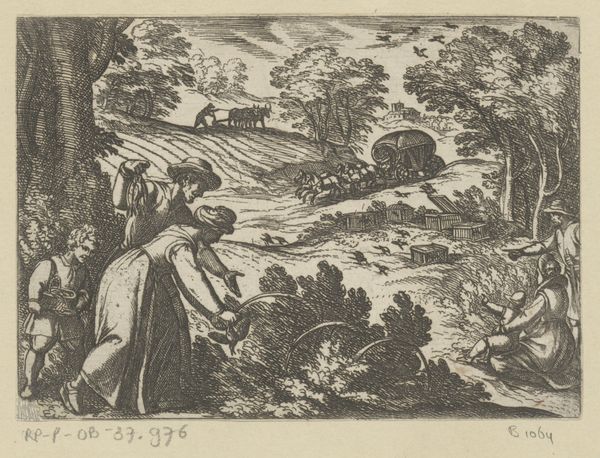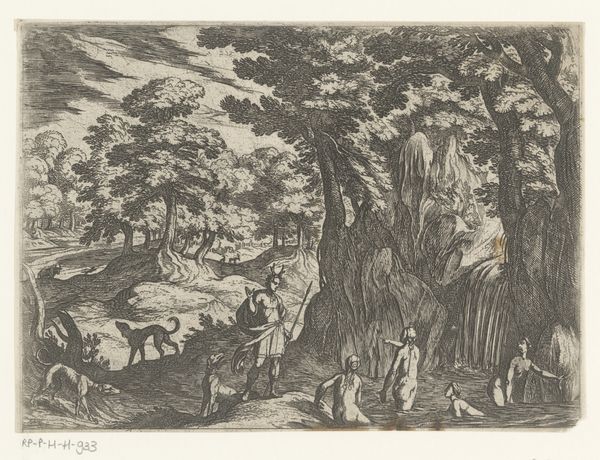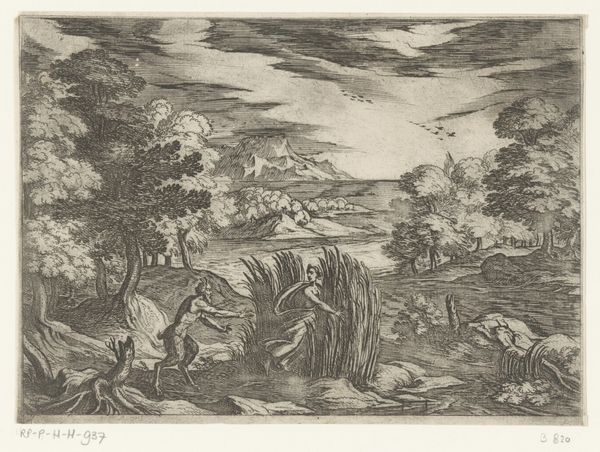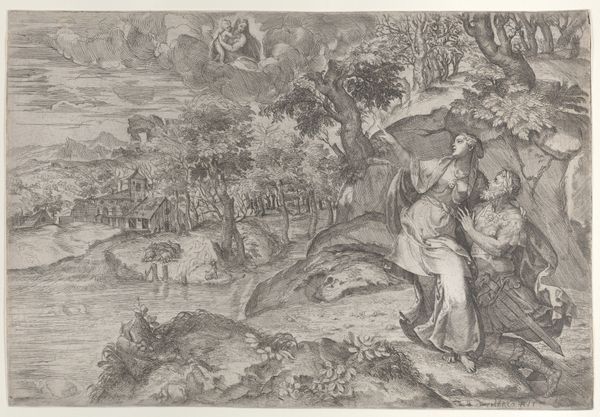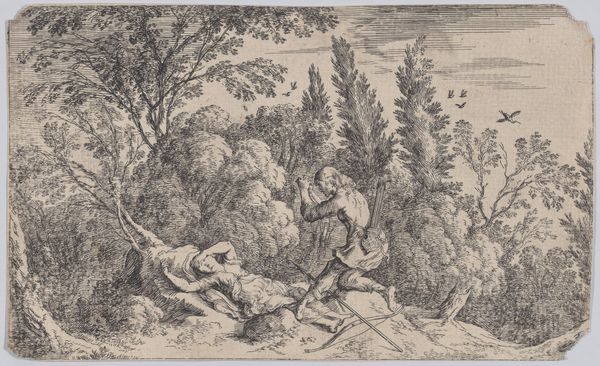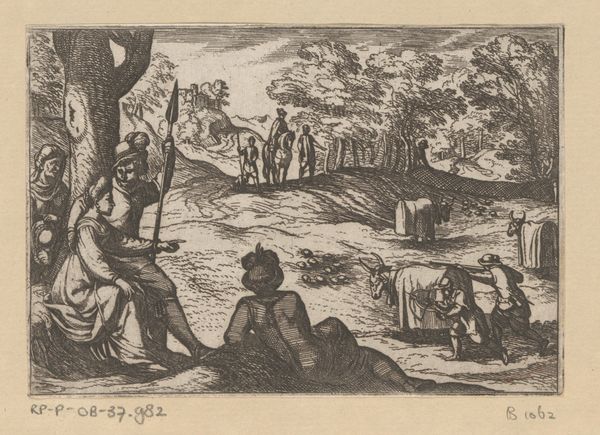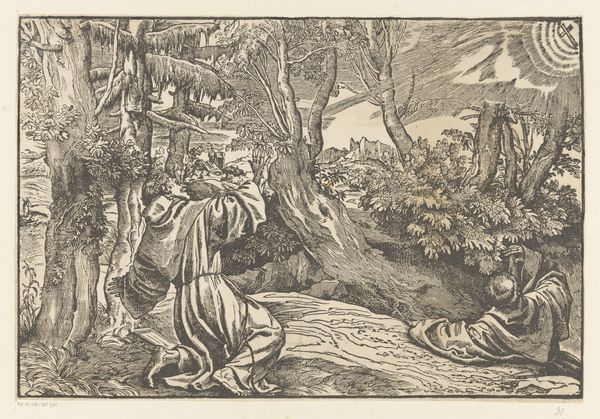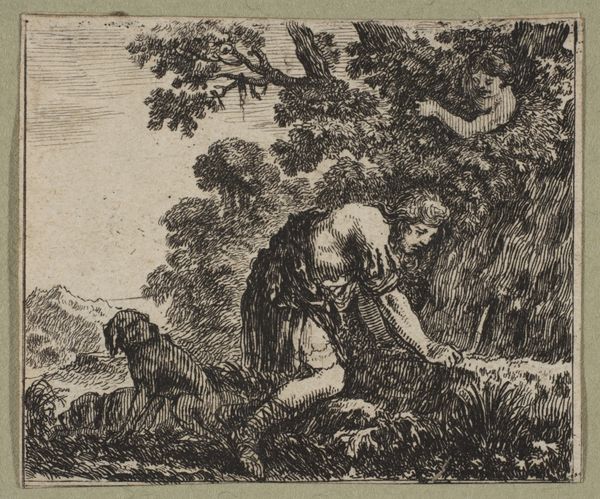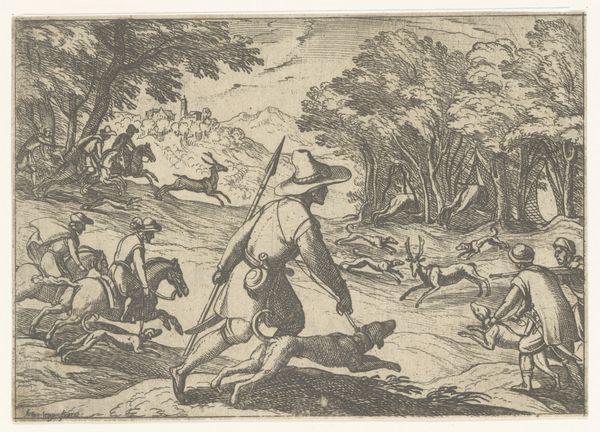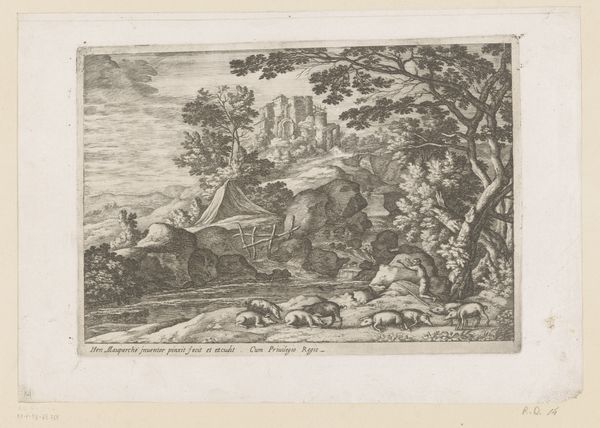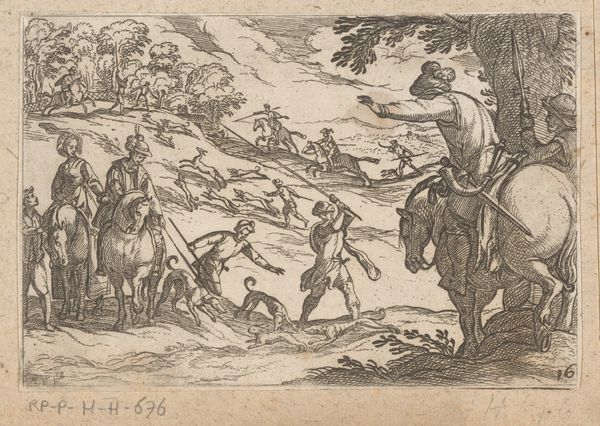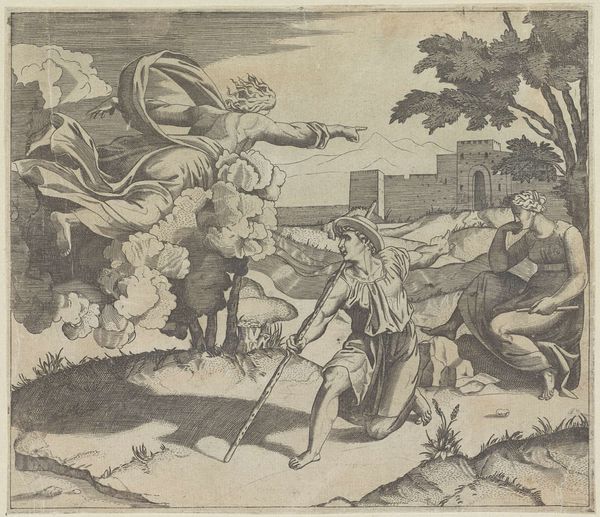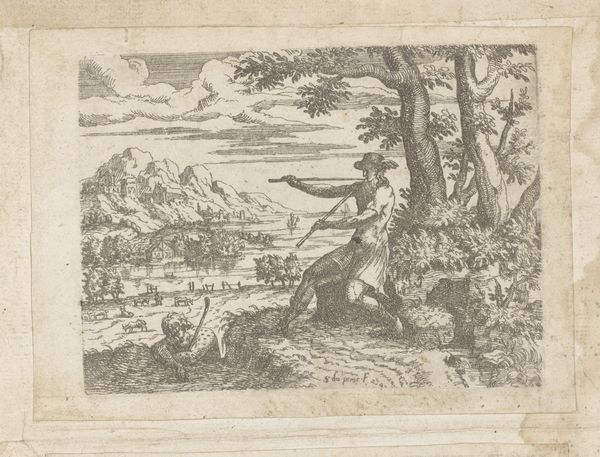
print, etching, engraving
#
ink drawing
# print
#
pen sketch
#
etching
#
landscape
#
11_renaissance
#
genre-painting
#
engraving
Dimensions: height 101 mm, width 140 mm
Copyright: Rijks Museum: Open Domain
Editor: So, this is “Hunters and Ladies Watching a Bird Trap” by Antonio Tempesta, made in 1598. It's an engraving, etching, and print displayed at the Rijksmuseum. It feels so… fragile, almost ephemeral, because of the line work. What’s your perspective on this, considering how it was made? Curator: For me, this work is a prime example of how art functions within specific social and material conditions. The etching and engraving process itself – the labour, the specialized tools, the reliance on printmaking as a reproductive medium – all point to a complex system of production and consumption. Notice how the landscape is rendered, not just as scenery, but as a site of economic activity and leisure. What might bird trapping represent in terms of class dynamics? Editor: That's interesting. It's like the landscape is not just a backdrop but also a place of labor and consumption. So the materials used, the ink, the paper, the printing process – these things shaped the art itself? Curator: Precisely! The materials themselves dictate certain limitations and affordances, but they also reveal a great deal about the artist's access to resources, their technical skills, and even the market they were targeting. Who do you think this kind of print was meant for? Was it a wealthy patron or a broader audience? Editor: Probably a broader audience. I imagine engravings made it easier for people other than nobles to have art. The availability of art made possible through print making changed art patronage itself! Curator: Absolutely. And by understanding the material and the methods of production, we can understand that wider cultural context. That’s why studying Tempesta's process is as informative as analyzing his aesthetic choices. We understand more than art-- we understand cultural frameworks. Editor: This has completely shifted my perspective! I now see it as part of a larger network of resources, skills, and economic realities rather than a lone image. Thanks!
Comments
No comments
Be the first to comment and join the conversation on the ultimate creative platform.
